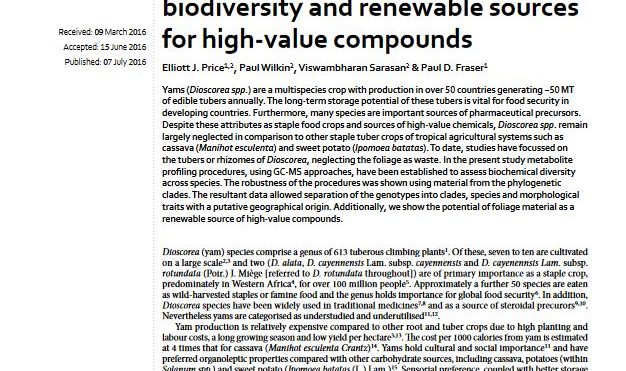Yams (Dioscorea spp.) are a multi-species crop with production in over 50 countries generating ~50 mt of edible tubers annually. The long-term storage potential of these tubers is vital for food security in developing countries. Furthermore, many species are important sources of pharmaceutical precursors. Despite these attributes as staple food crops and sources of high-value chemicals, Dioscorea spp. remain largely neglected in comparison to other staple tuber crops of tropical agricultural systems such as cassava (Manihot esculenta) and sweet potato (Ipomoea batatas). To date, studies have focused on the tubers or rhizomes of Dioscorea, neglecting the foliage as waste. In the present study, metabolite-profiling procedures, using GC-MS approaches, have been established to assess biochemical diversity across species. The robustness of the procedures was shown using material from the phylogenetic clades. The resultant data allowed separation of the genotypes into clades, species and morphological traits with a putative geographical origin. Additionally, we show the potential of foliage material as a renewable source of high-value compounds.
Region: Not specific
Date published:
2016
Published by:
Scientific Reports
Type of resource:
Journal article
Resource topic:
Yam
Project/Programme: Not specific
Pest/Disease: Not specific
Pages:
10
File type:
External link (1,352 KB)




